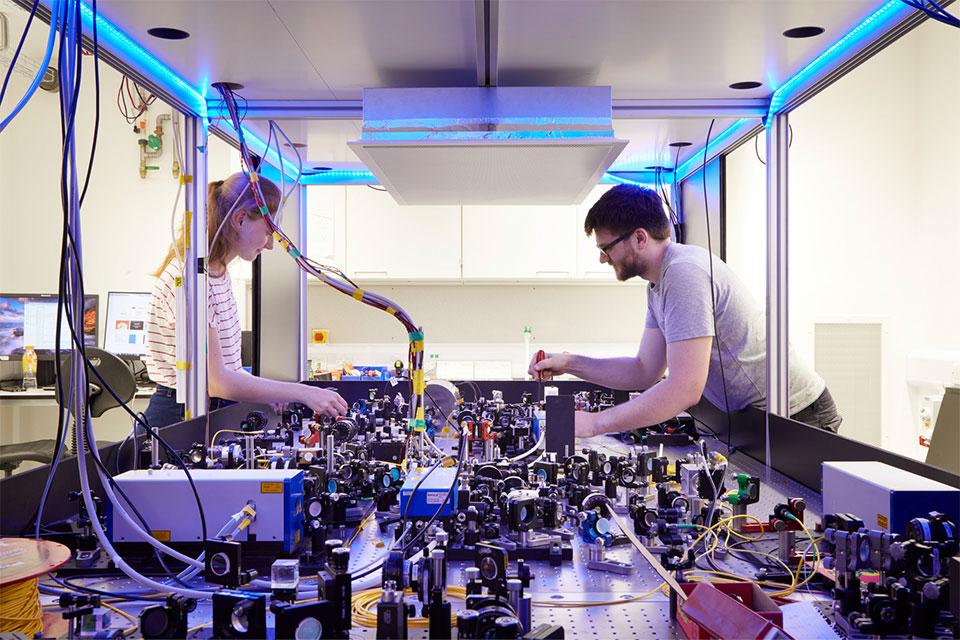Beecroft Building
Art Pak (LLNL) Indirect Drive ICF Collaboration
Abstract:
Creating a controlled fusion reaction that produces more energy than supplied to initiate it (i.e. target gain >1) is a grand scientific challenge with broad societal implications [1,2]. An outstanding issue for each approach pursuing this goal is creating plasma conditions in which Lawson's criteria[3], where the power of fusion self-heating exceeds all the power losses of the system, and target gain >1 are satisfied. After decades of research and technological advances the first laser indirect-drive inertial confinement fusion[4,5] experiment to satisfy the Lawson Criteria was performed, achieving a target gain of 0.72[6-8]. In this work, we will discuss recent results which utilized a 7% increase in laser energy to drive a 7% thicker target resulting in a target gain of 1.5, marking the first time a target gain >1 has been achieved in the laboratory. This milestone achievement provides a proof of principal demonstration and highlights the
potential of an inertial confinement approach to fusion energy.

Figure 1: Target gain from inertial confinement fusion experiments vs. time. Each color represents
different target design and the horizontal dashed line indicates the threshold for target gain>1.
In this overview, we will review the results from recent experiments discussing the challenges and the improvements to the target quality, design and laser that were made to enable these results. Additionally, detail will be given on how observations from nuclear and x-ray diagnostics are used within a semi-analytic framework to quantify the impact of degradations that reduce the fusion energy production. This analysis indicates that the two main sources of degradations are low mode implosion asymmetries and enhanced radiative loss from higher atomic number containments that mix into the reacting deuterium tritium plasma. Both the implosion asymmetry and enhanced radiative loss degradations reduce the rate of alpha particle heating which is a critical factor for determining the achievable gain. Additionally, the first experimental results that quantify the dynamics and power balance in inertial confinement fusion plasmas with target gains of near unity will be discussed. It is observed that increased levels of fusion self-heating strongly modify the plasma temperature, mass, size and power balance. Measurements are consistent with theory and detailed models and indicate that as the fusion yield and target gain increase, expansion overtakes radiation as the principal power loss mechanism of the plasma.
These recent results motivate an increased interest in addressing the scientific and engineering challenges that remain in order to realize an Inertial Fusion Energy (IFE) concept. Key technologies and novel methods for IFE as detailed in a recent Basic Research Needs report [9] will be discussed, including the need for higher gain targets, increased repetition rates, as well as alternate and higher efficiency drivers.
This work was performed under the auspices of Lawrence Livermore National Security, LLC
(LLNS) under Contract DE-AC52-07NA27344.
References
[1] National R search Council, Burning Plasma: Bringing a Star to Earth (The National Academies
Press, Washing- ton, DC, 2004).
[2] National Academies of Sciences, Engineering, and Medicine, Bringing Fusion to the U.S. Grid
(The National Academies Press, Washington, DC, 2021).
[3] J. D. Lawson, Proceedings of the Physical Society. Section B 70, 6 (1957).
[4] Nuckolls, J., Wood, L., Thiessen, A. et al. Laser Compression of Matter to Super-High
Densities: Thermonuclear (CTR) applications. Nature 239, 139-142 (1972).
[5] J. Lindl, Phys. Plasmas (1994-present) 2, 3933 (1995).
[6] H. Abu-Shawareb et al. (Indirect Drive ICF Collabora- tion), Phys. Rev. Lett. 129, 075001
(2022).
[7] A. L. Kritcher et al., Phys. Rev. E 106, 025201 (2022).
[8] A. B. Zylstra et al., Phys. Rev. E 106, 025202 (2022).
[9] https://www.dropbox.com/s/go3doegms6pjgc8/IFE%20BRN_full%20report_v2023…

